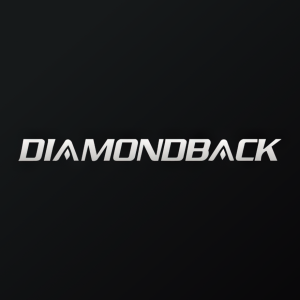Letter to Stockholders Issued by Diamondback Energy, Inc.
Rhea-AI Summary
Positive
- Strong Q1 2025 performance with $1.6 billion in Adjusted Free Cash Flow
- Aggressive shareholder returns with 55% of FCF returned through dividends and buybacks
- Strategic Double Eagle acquisition adding 400 core locations in Midland Basin
- Successful completion of $4.45 billion Drop Down transaction with Viper Energy
- Operational efficiency improvements with record-setting drilling performance
- Minimal production impact despite capital reduction (only 1% guidance reduction)
Negative
- Reduction in 2025 capital budget by 10% ($400 million) due to market conditions
- Significant debt load with $15.7 billion gross debt ($15.1 billion net)
- Dropping three rigs and one completion crew due to market uncertainty
- 10% increase in casing costs due to steel tariffs
- Need for $1.5 billion in asset sales to reduce debt levels
News Market Reaction 1 Alert
On the day this news was published, FANG declined 0.83%, reflecting a mild negative market reaction.
Data tracked by StockTitan Argus on the day of publication.
MIDLAND, Texas, May 05, 2025 (GLOBE NEWSWIRE) --
Diamondback Stockholders,
This letter is meant to be a supplement to our earnings release and is being furnished to the Securities and Exchange Commission (SEC) and released to our stockholders simultaneously with our earnings release. Please see the information regarding forward-looking statements and non-GAAP financial information included at the end of this letter.
Macro Update
The past two months have been challenging for the U.S. oil and gas industry, as the combination of global economic uncertainty (lower demand) and an increase in expected OPEC+ production (higher supply) has lowered oil prices and increased volatility.
Over the past decade, the cost of supply for the average barrel of oil produced in the United States has increased. The shale revolution has evolved from proof of concept (outspend cash flow to prove up basins) to manufacturing mode (significant growth) and is now in a more mature stage of development (free cash flow generation and return of capital). Today, geologic headwinds outweigh the tailwinds provided by improvements in technology and operational efficiency. On an inflation-adjusted basis, there have only been two quarters since 2004 where front month oil prices have been as cheap as they are today (excluding 2020 which was impacted by the global pandemic). Therefore, we believe we are at a tipping point for U.S. oil production at current commodity prices.
As crude pricing moves lower for a period of time, as it has over the last month, we expect activity to slow and oil production to decline. We currently estimate that the U.S. frac crew count is already down ~
This will have a meaningful impact on our industry and our country. Over the past 15 years, this industry has grown U.S. oil production by 8 million barrels of oil per day to over 13 million barrels per day, a staggering growth trajectory. This growth alone would make the United States the third largest oil producer in the world. Combining both oil and gas production, the United States today produces more than the second and third largest producers, Russia and Saudi Arabia, combined. This has transformed our economy and given the United States a level of energy security not thought possible at the beginning of this century.
In the process, this industry has pushed employment to over 2 million jobs1, grown GDP, improved our trade balance and reduced our dependence on foreign oil. This represents the best of American ingenuity, strengthening America’s standing on the world stage while creating millions of high-paying American jobs. In addition, the tax revenue generated from our industry supports education, infrastructure and health care across the country. For example, in 2024 the Texas oil and gas industry sent over
2025 Guidance Update
We believe this is the first true test of the capital returns model we implemented post-COVID that has improved returns and stockholder trust. At Diamondback, we believe we can create long-term value for our stockholders during this volatility by making the right capital allocation decisions – which we believe we are doing through our announcements today. We have spent the last five years positioning the Company to excel in periods of both strength and weakness, and are confident we will build off a strong first quarter to continue delivering differentiated results for our stockholders.
Last quarter, I stressed that we have consistently chosen capital efficiency and Free Cash Flow generation over volume growth for our capital plan. As the macro environment has deteriorated, we are staying true to this thesis and lowering our activity to cut CAPEX, drill and complete fewer wells and maximize Free Cash Flow generation during this period of macro instability. Put simply, we would prefer to use the incremental dollar generated to repurchase shares and pay down debt over drilling and completing wells at these prices today.
Therefore, we are lowering our full year 2025 capital budget to
Should oil prices remain weak or further deteriorate, we will maintain this level of activity, with potential to reduce further if needed. Should the market stabilize and we see consistent oil prices above
Due to year to date volume outperformance, we expect that the offsetting oil production effect of this activity change to be minimal. Our updated annual oil production range is now 480 to 495 MBO/d, down just
As a reminder, we measure our capital efficiency using oil barrels produced divided by total capital spent. Our updated guidance implies full year 2025 oil production per million dollars of cash capital expenditures ("MBO per $MM of CAPEX") of 49.4, ~
First Quarter 2025 Review
For the first quarter, Diamondback produced 475.9 MBO/d, above the high end of the oil guidance range of 470 - 475 MBO/d. Capital expenditures were
We generated
Operations Update
Despite the macroeconomic headwinds, the base business continues to execute flawlessly. Our drilling and completions teams remain focused on improving operational performance and driving efficiency gains. During the quarter, our drilling team set multiple records for the Company. We averaged 8.8 days from spud to target depth (“TD”), the fastest average performance in Diamondback history. Since 2018, we have drilled 23 wells from spud to TD in under 5 days and 10 of these wells were drilled in the first quarter. Additionally, we averaged nearly 2,500 lateral feet drilled per day, the best quarterly performance since 2021.
On the completions side, we continue to utilize SimulFrac fleets for nearly all of our completions and are now running four electric Halliburton Zeus fleets. In the first quarter, we averaged approximately 3,500 lateral feet completed per day.
As I mentioned earlier, our cost of casing has already increased by over
Double Eagle Acquisition
On April 1st we closed the previously announced Double Eagle acquisition. As I wrote last quarter, we believe this transaction further positions Diamondback to have the best long-term capital efficiency in the Permian Basin through a combination of inventory quality, duration and execution cost structure. We view the Double Eagle asset as the last high-quality, largely undeveloped position in the Midland Basin and have incorporated their 400 core locations into our near-term drilling plan. The operations team has seamlessly integrated this new position into our portfolio and performance on the asset is exceeding initial expectations. Additionally, our partnership to accelerate development on our Southern Midland Basin acreage is underway, which we expect to have significant Free Cash Flow benefits to Diamondback in 2026 and beyond.
Drop Down Acquisition
Last Thursday, Viper shareholders voted to approve the Drop Down and we closed the transaction shortly thereafter. As a reminder, Diamondback sold Endeavor’s mineral and override assets to our subsidiary Viper Energy, Inc. in a transaction valued at approximately
Balance Sheet
Pro forma for the close of the Double Eagle transaction, we had approximately
We used the
On February 28th, MPLX announced it had signed a definitive agreement with affiliates of WhiteWater and Diamondback to purchase the remaining
Additionally, we have repurchased ~
Balance sheet strength is a core tenet of Diamondback’s strategy. We continue to have a near-term goal of reducing consolidated net debt to
Closing
Later this month at Diamondback’s 2025 Annual Meeting, I will move into my role as Executive Chairman. I will still be an employee of the Company and will continue to provide advice and guidance to our management team, which will be led by Kaes Van’t Hof as CEO. Kaes is a generational talent who I have been fortunate enough to have worked with closely for the past decade. The company is in great hands, and the future could not be brighter for Diamondback.
It doesn’t seem that long ago when I was working on a laptop in the kitchen of a small metal field office trying to figure out how to get the company off the ground. It took quite a few twists and turns, but we were able to IPO in October 2012 at a
I am so proud of our employees who made this growth possible. Their passion, resilience, and commitment to excellence have shaped our identity and have allowed us to become what we are today. We have the best organization in the industry with a culture where good is never good enough. It is amazing to watch this drive in action and see it translate to the results we deliver quarter in and quarter out.
Thank you to all our employees, past and present, who have put their support in me and Diamondback, trusting us to help you reach your career goals and aspirations. Each of you has been an inspiration to me and it has been such a privilege leading you the past fifteen years.
We are fortunate to have an exceptional Board of Directors, a group who not only helped shape our long-term strategy but also stood firmly behind management through both our greatest successes and our most challenging moments. Their guidance has been instrumental in the Company’s growth and evolution.
I am especially grateful to Steve West, our Chairman during our formative first decade. His strategic vision, his steady leadership and, above all, his enduring friendship have left a lasting imprint on both the Company and me personally. Words fall short in expressing the depth of my appreciation for all he has contributed.
Thank you to our stockholders for believing in us when very few did and supporting us all these years. I am so proud of the Company we have built and the track record of success we have created. We are blessed to live in a country and operate in a state where entrepreneurial spirit is encouraged and nurtured, a place where companies like Diamondback can become the next great American success story.
Sincerely,
Travis D. Stice
Chairman of the Board and Chief Executive Officer
Investor Contact:
Adam Lawlis
+1 432.221.7467
alawlis@diamondbackenergy.com
Forward-Looking Statements:
This letter contains “forward-looking statements” within the meaning of Section 27A of the Securities Act of 1933, as amended, and Section 21E of the Exchange Act of 1934, as amended, which involve risks, uncertainties, and assumptions. All statements, other than statements of historical fact, including statements regarding future performance; business strategy; future operations (including drilling plans and capital plans); estimates and projections of revenues, losses, costs, expenses, returns, cash flow, and financial position; reserve estimates and its ability to replace or increase reserves; anticipated benefits or other effects of strategic transactions (including the recently completed Endeavor merger and other acquisitions or divestitures); the expected amount and timing of synergies from the Endeavor merger; and plans and objectives of management (including plans for future cash flow from operations and for executing environmental strategies) are forward-looking statements. When used in this letter, the words “aim,” “anticipate,” “believe,” “continue,” “could,” “estimate,” “expect,” “forecast,” “future,” “guidance,” “intend,” “may,” “model,” “outlook,” “plan,” “positioned,” “potential,” “predict,” “project,” “seek,” “should,” “target,” “will,” “would,” and similar expressions (including the negative of such terms) are intended to identify forward-looking statements, although not all forward-looking statements contain such identifying words. Although Diamondback believes that the expectations and assumptions reflected in its forward-looking statements are reasonable as and when made, they involve risks and uncertainties that are difficult to predict and, in many cases, beyond Diamondback’s control. Accordingly, forward-looking statements are not guarantees of future performance and actual outcomes could differ materially from what Diamondback has expressed in its forward-looking statements.
Factors that could cause the outcomes to differ materially include (but are not limited to) the following: changes in supply and demand levels for oil, natural gas, and natural gas liquids, and the resulting impact on the price for those commodities; the impact of public health crises, including epidemic or pandemic diseases and any related company or government policies or actions; changes in U.S. energy, environmental, monetary and trade policies, including with respect to tariffs or other trade barriers, and any resulting trade tensions; actions taken by the members of OPEC and Russia affecting the production and pricing of oil, as well as other domestic and global political, economic, or diplomatic developments, including any impact of the ongoing war in Ukraine and the Israel-Hamas war on the global energy markets and geopolitical stability; instability in the financial markets; concerns over a potential economic slowdown or recession; inflationary pressures; higher interest rates and their impact on the cost of capital; regional supply and demand factors, including delays, curtailment delays or interruptions of production, or governmental orders, rules or regulations that impose production limits; federal and state legislative and regulatory initiatives relating to hydraulic fracturing, including the effect of existing and future laws and governmental regulations; physical and transition risks relating to climate change; those risks described in Item 1A of Diamondback’s Annual Report on Form 10-K, filed with the SEC on February 26, 2025, and those risks disclosed in its subsequent filings on Forms 10-Q and 8-K, which can be obtained free of charge on the SEC’s website at http://www.sec.gov and Diamondback’s website at www.diamondbackenergy.com/investors.
In light of these factors, the events anticipated by Diamondback’s forward-looking statements may not occur at the time anticipated or at all. Moreover, Diamondback operates in a very competitive and rapidly changing environment and new risks emerge from time to time. Diamondback cannot predict all risks, nor can it assess the impact of all factors on its business or the extent to which any factor, or combination of factors, may cause actual results to differ materially from those anticipated by any forward-looking statements it may make. Accordingly, you should not place undue reliance on any forward-looking statements. All forward-looking statements speak only as of the date of this letter or, if earlier, as of the date they were made. Diamondback does not intend to, and disclaims any obligation to, update or revise any forward-looking statements unless required by applicable law.
Non-GAAP Financial Measures
This letter includes financial information not prepared in conformity with generally accepted accounting principles (GAAP), including free cash flow. The non-GAAP information should be considered by the reader in addition to, but not instead of, financial information prepared in accordance with GAAP. A reconciliation of the differences between these non-GAAP financial measures and the most directly comparable GAAP financial measures can be found in Diamondback's quarterly results posted on Diamondback's website at www.diamondbackenergy.com/investors/. Furthermore, this letter includes or references certain forward-looking, non-GAAP financial measures. Because Diamondback provides these measures on a forward-looking basis, it cannot reliably or reasonably predict certain of the necessary components of the most directly comparable forward-looking GAAP financial measures, such as future impairments and future changes in working capital. Accordingly, Diamondback is unable to present a quantitative reconciliation of such forward-looking, non-GAAP financial measures to the respective most directly comparable forward-looking GAAP financial measures. Diamondback believes that these forward-looking, non-GAAP measures may be a useful tool for the investment community in comparing Diamondback's forecasted financial performance to the forecasted financial performance of other companies in the industry.
__________________________
1 According to Texas Independent Producers & Royalty Owners Association (TIPRO) 10th edition of its “State of Energy Report”








